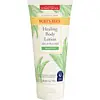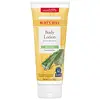What's inside
What's inside
 Key Ingredients
Key Ingredients

 Benefits
Benefits

 Concerns
Concerns

 Ingredients Side-by-side
Ingredients Side-by-side

Water
Skin ConditioningGlycerin
HumectantHelianthus Annuus Seed Oil
EmollientSimmondsia Chinensis Seed Oil
EmollientCaprylic/Capric Triglyceride
MaskingCocos Nucifera Oil
MaskingCetyl Alcohol
EmollientButyrospermum Parkii Butter
Skin ConditioningGlyceryl Stearate Citrate
EmollientRicinus Communis Seed Oil
MaskingSodium Stearoyl Lactylate
EmulsifyingAloe Barbadensis Leaf Juice
Skin ConditioningSaccharomyces Ferment
Skin ConditioningBeeswax
Emulsion StabilisingTocopherol
AntioxidantGlycine Soja Oil
EmollientHoney
HumectantHydrogenated Castor Oil
EmollientOryza Sativa Extract
AbsorbentPolyglyceryl-3 Stearate
EmulsifyingXanthan Gum
EmulsifyingCitric Acid
BufferingArginine
MaskingPotassium Sorbate
PreservativeBiosaccharide Gum-1
HumectantSucrose Stearate
EmollientFructose
HumectantGlucose
HumectantInositol
HumectantSucrose
HumectantTrehalose
HumectantAlcohol
AntimicrobialGlyceryl Caprylate
EmollientMagnesium Aluminum Silicate
AbsorbentSodium Anisate
AntimicrobialSodium Levulinate
Skin ConditioningSodium Citrate
BufferingSodium Benzoate
MaskingSodium Phytate
Benzoic Acid
MaskingPhenoxyethanol
PreservativeWater, Glycerin, Helianthus Annuus Seed Oil, Simmondsia Chinensis Seed Oil, Caprylic/Capric Triglyceride, Cocos Nucifera Oil, Cetyl Alcohol, Butyrospermum Parkii Butter, Glyceryl Stearate Citrate, Ricinus Communis Seed Oil, Sodium Stearoyl Lactylate, Aloe Barbadensis Leaf Juice, Saccharomyces Ferment, Beeswax, Tocopherol, Glycine Soja Oil, Honey, Hydrogenated Castor Oil, Oryza Sativa Extract, Polyglyceryl-3 Stearate, Xanthan Gum, Citric Acid, Arginine, Potassium Sorbate, Biosaccharide Gum-1, Sucrose Stearate, Fructose, Glucose, Inositol, Sucrose, Trehalose, Alcohol, Glyceryl Caprylate, Magnesium Aluminum Silicate, Sodium Anisate, Sodium Levulinate, Sodium Citrate, Sodium Benzoate, Sodium Phytate, Benzoic Acid, Phenoxyethanol
Alcohol
AntimicrobialZea Mays Starch
AbsorbentAvena Sativa Kernel Flour
AbrasiveAloe Barbadensis Leaf Juice
Skin ConditioningButyrospermum Parkii Butter
Skin ConditioningHydrolyzed Jojoba Esters
Skin ConditioningJojoba Esters
EmollientKaolin
AbrasiveLecithin
EmollientXanthan Gum
EmulsifyingCitric Acid
BufferingSucrose Stearate
EmollientZinc Oxide
Cosmetic ColorantSodium PCA
HumectantSucrose Polystearate
EmollientGlyceryl Laurate
EmollientSodium Stearoyl Lactylate
EmulsifyingPotassium Sorbate
PreservativeSodium Benzoate
MaskingPhenoxyethanol
PreservativeAlcohol, Zea Mays Starch, Avena Sativa Kernel Flour, Aloe Barbadensis Leaf Juice, Butyrospermum Parkii Butter, Hydrolyzed Jojoba Esters, Jojoba Esters, Kaolin, Lecithin, Xanthan Gum, Citric Acid, Sucrose Stearate, Zinc Oxide, Sodium PCA, Sucrose Polystearate, Glyceryl Laurate, Sodium Stearoyl Lactylate, Potassium Sorbate, Sodium Benzoate, Phenoxyethanol
Alternatives
Ingredients Explained
These ingredients are found in both products.
Ingredients higher up in an ingredient list are typically present in a larger amount.
Alcohol comes in many different forms. Different types of alcohol will have different effects on skin. This ingredient is usually an astringent alcohol.
These alcohols are drying on the skin. They may strip away your skin's natural oils and even damage your skin barrier. Astringent alcohols may also irritate skin.
Other types of astringent alcohols include:
According to the National Rosacea Society based in the US, you should be mindful of products with these alcohols in the top half of ingredients.
Any type of sanitizing product will have high amounts of alcohol to help kill bacteria and viruses.
Fatty alcohols come from plant oils such as coconut oil. These can help hydrate the skin and are non-irritating. Some fatty alcohols include cetyl and stearyl alcohol.
Learn more about AlcoholAloe Barbadensis Leaf Juice comes from leaves of the aloe plant. Aloe Barbadensis Leaf Juice is best known for helping to soothe sunburns. It is also anti-inflammatory, moisturizing, antiseptic, and can help heal wounds.
Aloe is packed with good stuff including Vitamins A, C, and E. These vitamins are antioxidants, which help fight free-radicals and the damage they may cause. Free-radicals are molecules that may damage your skin cells, such as pollution.
Aloe Barbadensis Leaf Juice also contains sugars. These sugars come in the form of monosaccharides and polysaccharides, folic acid, and choline. These sugars are able to help bind moisture to skin.
It also contains minerals such as calcium, 12 anthraquinones, fatty acids, amino acids, and Vitamin B12.
Learn more about Aloe Barbadensis Leaf JuiceThis ingredient is also known as shea butter. It is an effective skin hydrator and emollient.
Emollients help soothe and soften your skin. It does this by creating a protective film on your skin. This barrier helps trap moisture and keeps your skin hydrated. Emollients may be effective at treating dry or itchy skin.
Shea butter is rich in antioxidants. Antioxidants help fight free-radicals, or molecules that may harm the body. It is also full of fatty acids including stearic acid and linoleic acid. These acids help replenish the skin and keep skin moisturized.
While Shea Butter has an SPF rating of about 3-4, it is not a sunscreen replacement.
Shea butter may not be fungal acne safe. We recommend speaking with a professional if you have any concerns.
Learn more about Butyrospermum Parkii ButterCitric Acid is an alpha hydroxy acid (AHA) naturally found in citrus fruits like oranges, lemons, and limes.
Like other AHAs, citric acid can exfoliate skin by breaking down the bonds that hold dead skin cells together. This helps reveal smoother and brighter skin underneath.
However, this exfoliating effect only happens at high concentrations (20%) which can be hard to find in cosmetic products.
Due to this, citric acid is usually included in small amounts as a pH adjuster. This helps keep products slightly more acidic and compatible with skin's natural pH.
In skincare formulas, citric acid can:
While it can provide some skin benefits, research shows lactic acid and glycolic acid are generally more effective and less irritating exfoliants.
Most citric acid used in skincare today is made by fermenting sugars (usually from molasses). This synthetic version is identical to the natural citrus form but easier to stabilize and use in formulations.
Read more about some other popular AHA's here:
Learn more about Citric AcidPhenoxyethanol is a preservative that has germicide, antimicrobial, and aromatic properties. Studies show that phenoxyethanol can prevent microbial growth. By itself, it has a scent that is similar to that of a rose.
It's often used in formulations along with Caprylyl Glycol to preserve the shelf life of products.
Potassium Sorbate is a preservative used to prevent yeast and mold in products. It is commonly found in both cosmetic and food products.
This ingredient comes from potassium salt derived from sorbic acid. Sorbic acid is a natural antibiotic and effective against fungus.
Both potassium sorbate and sorbic acid can be found in baked goods, cheeses, dried meats, dried fruit, ice cream, pickles, wine, yogurt, and more.
You'll often find this ingredient used with other preservatives.
Learn more about Potassium SorbateSodium Benzoate is a preservative. It's used in both cosmetic and food products to inhibit the growth of mold and bacteria. It is typically produced synthetically.
Both the US FDA and EU Health Committee have approved the use of sodium benzoate. In the US, levels of 0.1% (of the total product) are allowed.
Sodium benzoate works as a preservative by inhibiting the growth of bacteria inside of cells. It prevents the cell from fermenting a type of sugar using an enzyme called phosphofructokinase.
It is the salt of benzoic acid. Foods containing sodium benzoate include soda, salad dressings, condiments, fruit juices, wines, and snack foods.
Studies for using ascorbic acid and sodium benzoate in cosmetics are lacking, especially in skincare routines with multiple steps.
We always recommend speaking with a professional, such as a dermatologist, if you have any concerns.
Learn more about Sodium BenzoateThis ingredient also goes by the name SSL. It is a non-toxic, biodegradable ingredient made from renewable sources.
SSL is typically used as a surfactant and emulsifier in skincare to stabilize water-based formulas and improve texture. It can be synthetic or animal-derived.
Sucrose Stearate is derived from stearic acid and sucrose (sugar). It is an emollient and emulsifier.
As an emulsifier, it prevents oils and water from separating in a product. This property also makes it a surfactant and therefore a cleansing agent.
Xanthan gum is used as a stabilizer and thickener within cosmetic products. It helps give products a sticky, thick feeling - preventing them from being too runny.
On the technical side of things, xanthan gum is a polysaccharide - a combination consisting of multiple sugar molecules bonded together.
Xanthan gum is a pretty common and great ingredient. It is a natural, non-toxic, non-irritating ingredient that is also commonly used in food products.
Learn more about Xanthan Gum